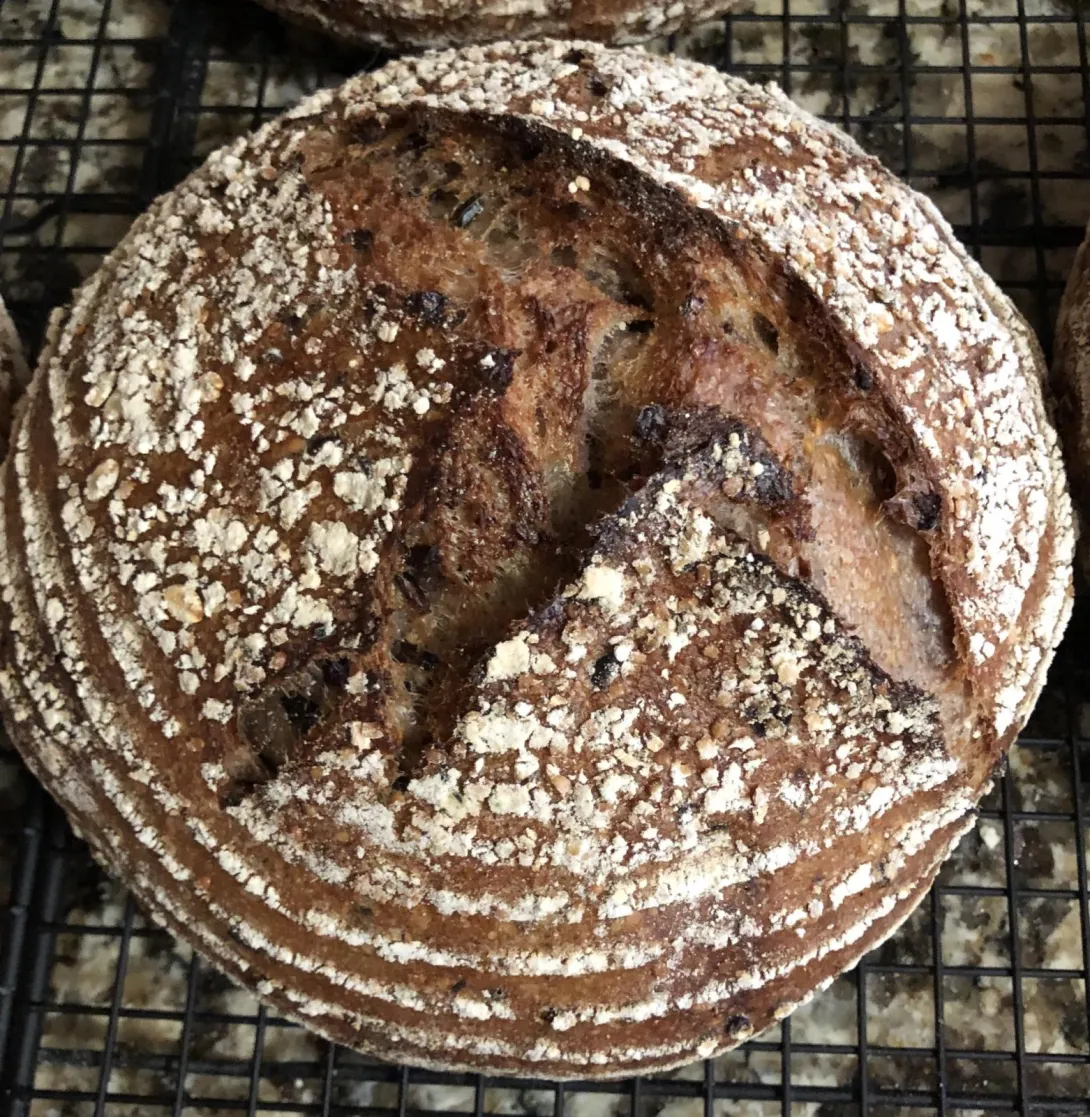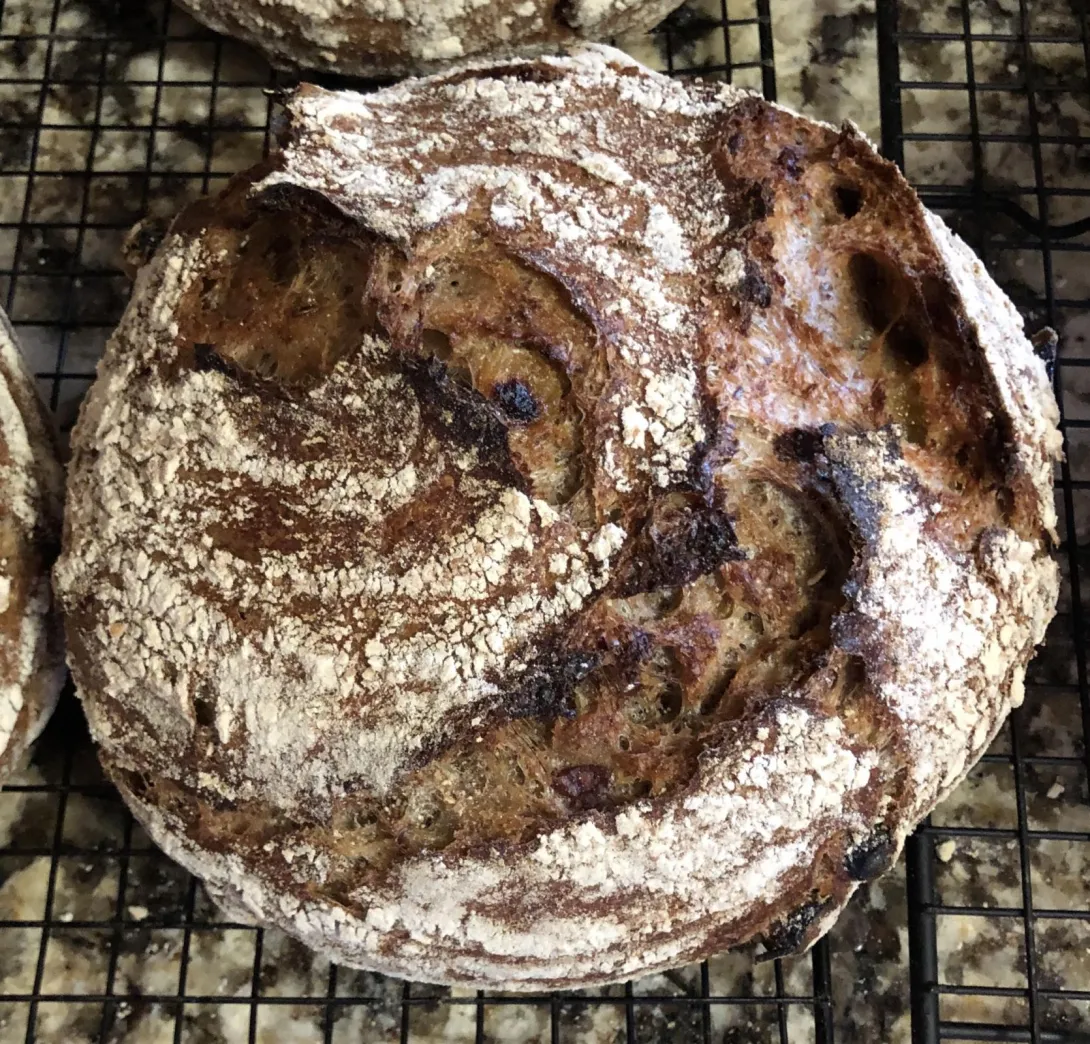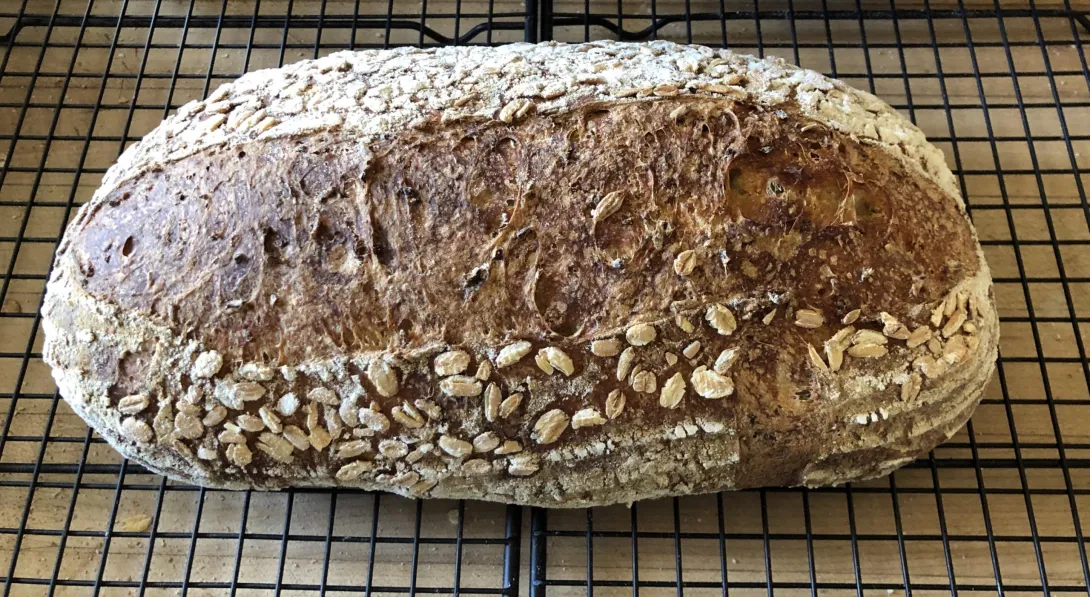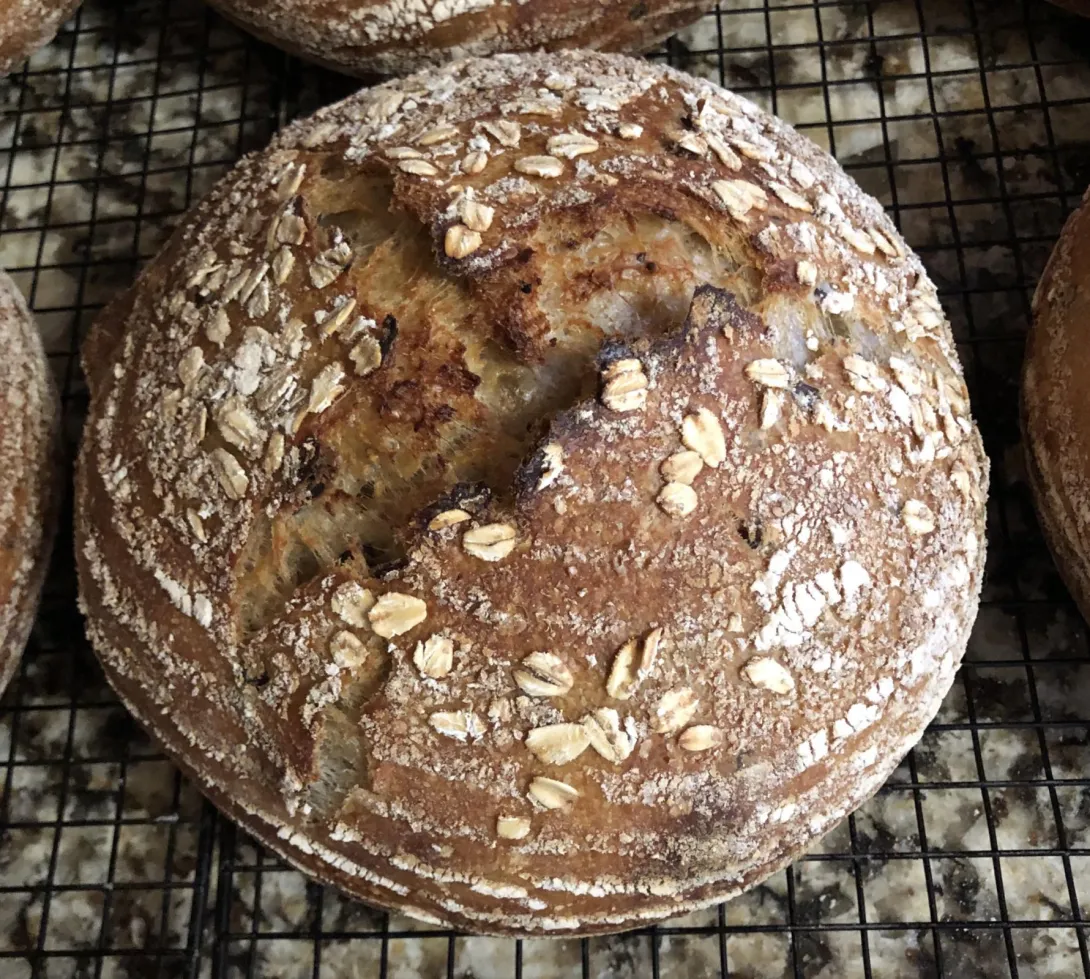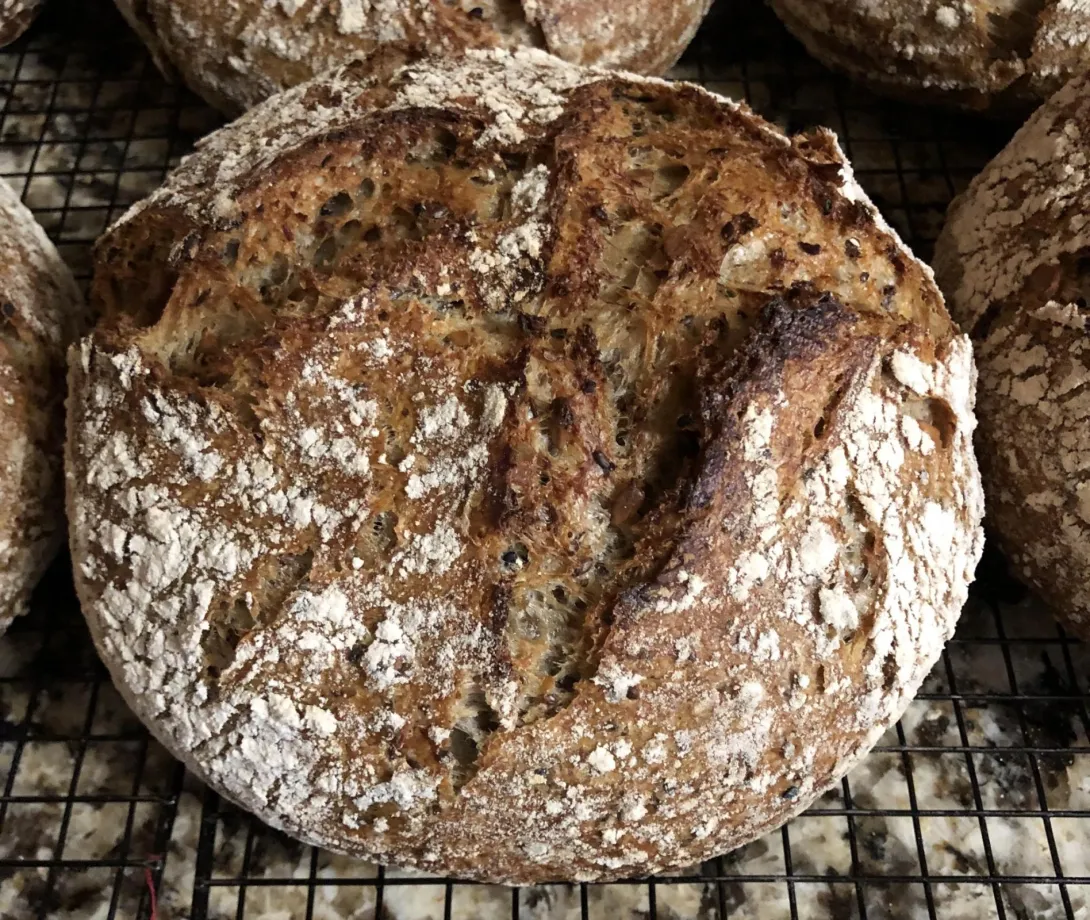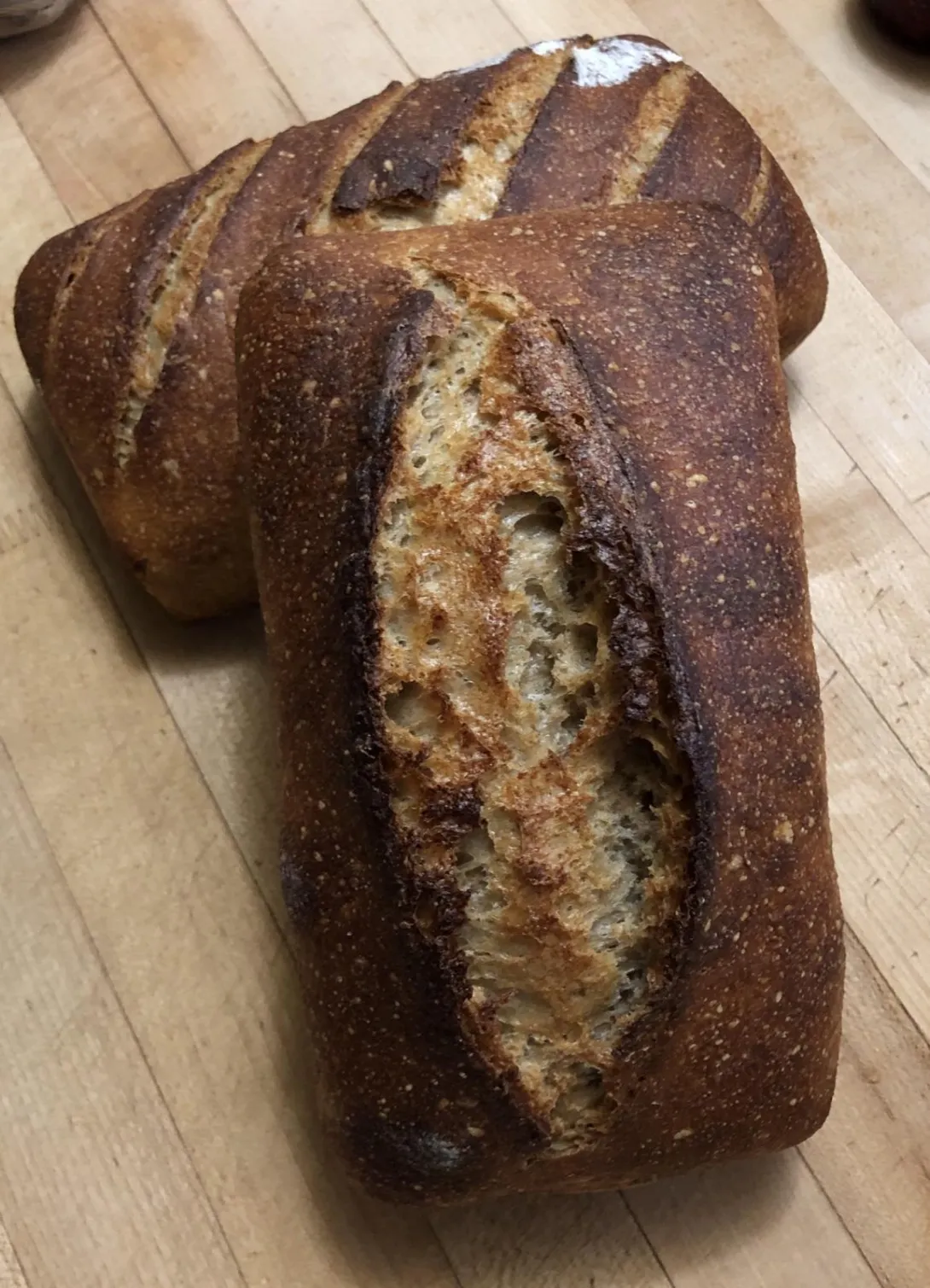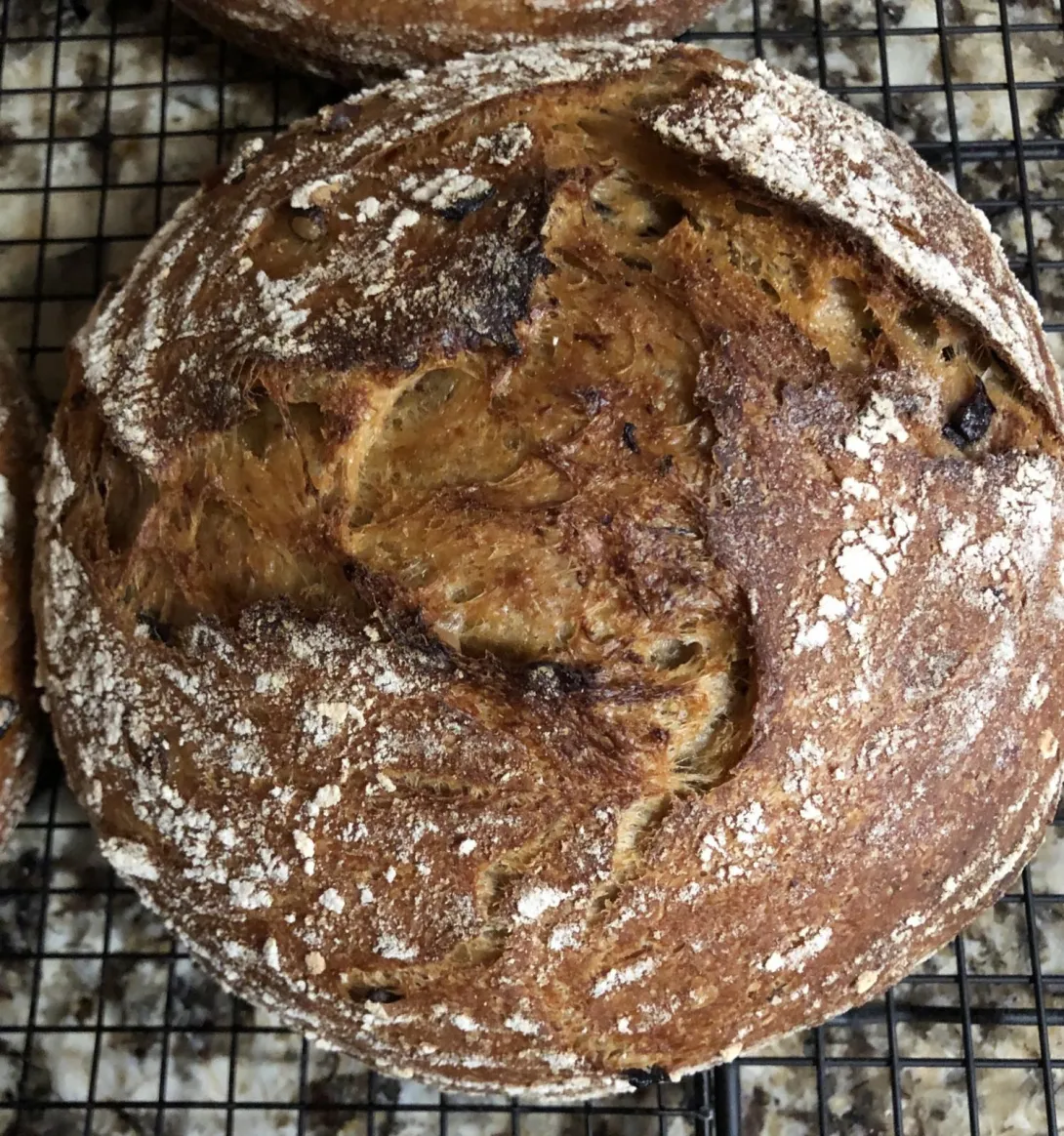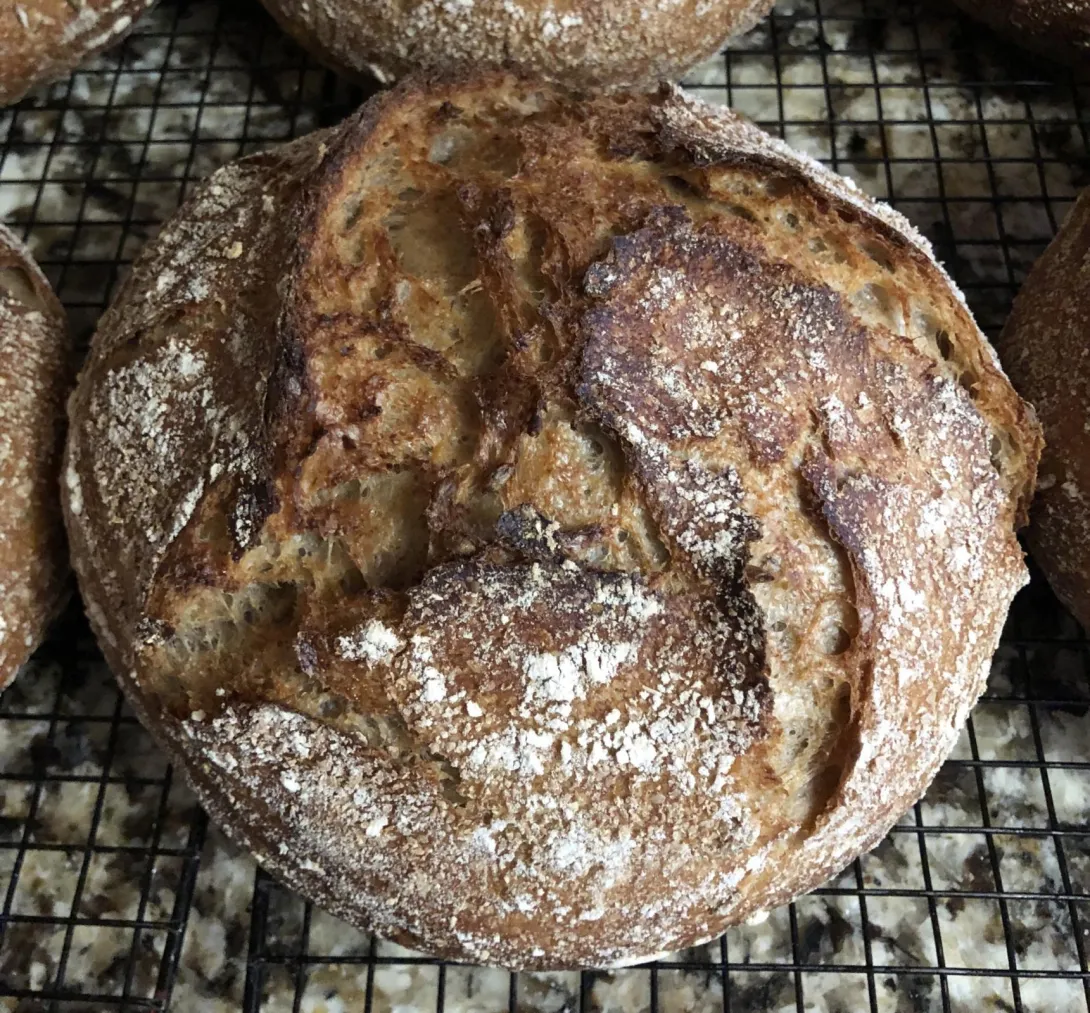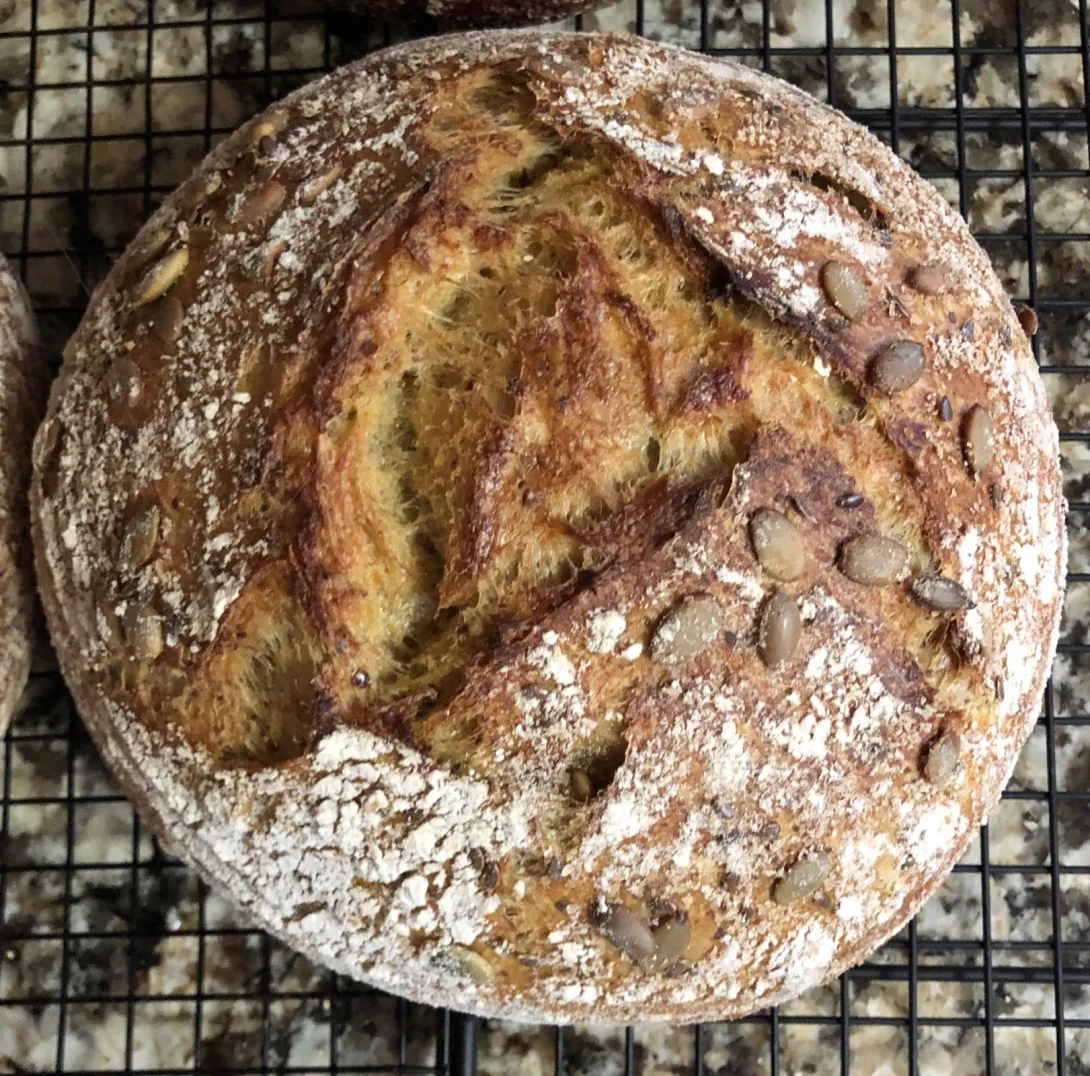Honeyed Spelt and Oat
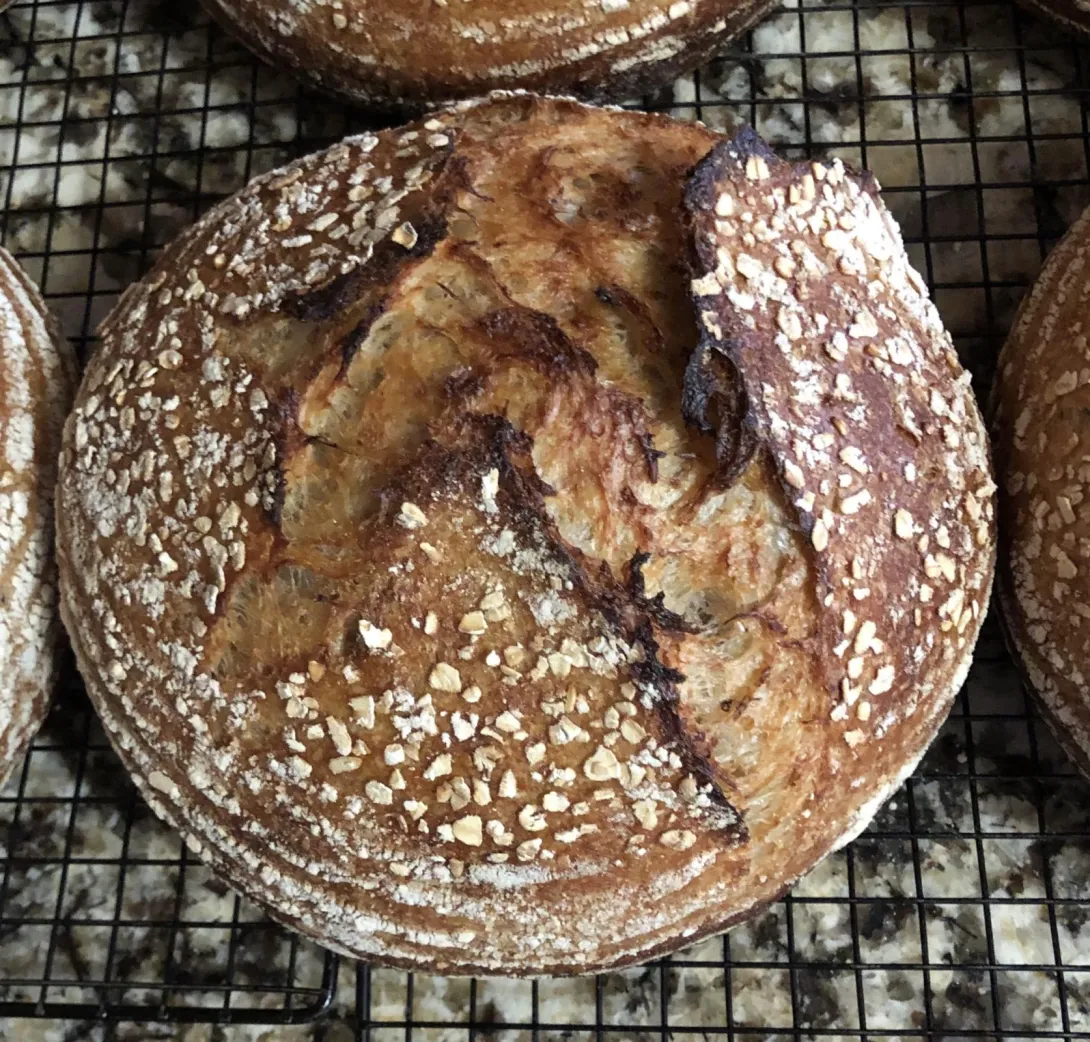
It was time to redo this one as it is one of my favourites. Recipe is adapted from Sarah Owens.
Recipe
Makes 3 loaves of ~ 885 g unbaked boules
Oat Soaker
245 g Rolled Oats
480 g Boiling Water
Dough
800 g Unbleached Flour
200 g High extraction Spelt Flour (230 g Spelt berries)
540 Water
726 g Soaker
80 g Honey
22 g Salt
30 g Yogurt
250 g Levain
Mid afternoon the day before:
